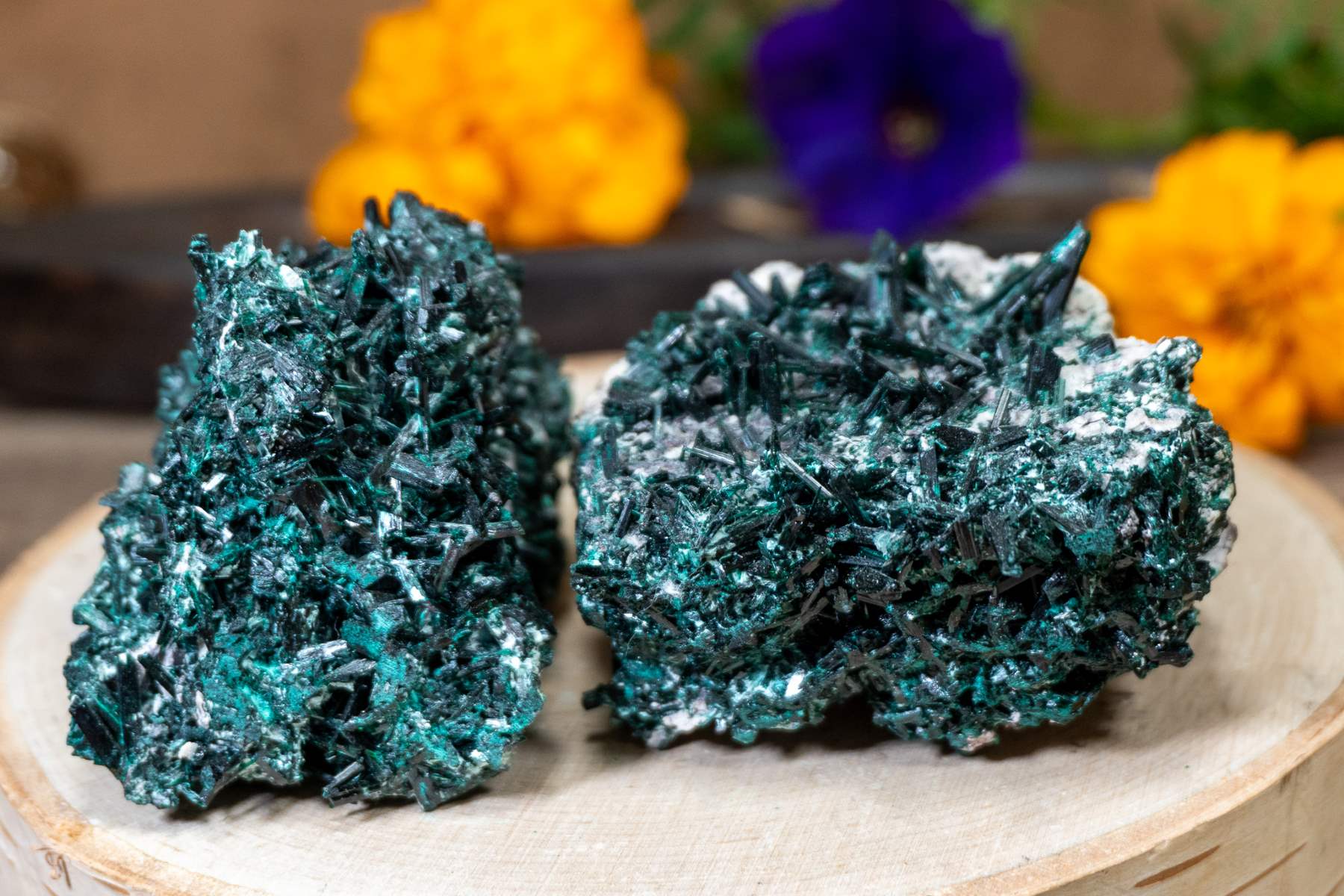
Brochantite, a striking green mineral, often catches the eye of geologists and collectors alike. But what exactly is brochantite? This mineral, primarily composed of copper sulfate, forms in arid, oxidized zones of copper deposits. Its vibrant color and crystal structure make it a favorite among mineral enthusiasts. Found in places like Arizona, Chile, and Namibia, brochantite often appears alongside other minerals such as malachite and azurite. Its unique properties not only make it visually appealing but also scientifically significant. Whether you're a budding geologist or just curious about minerals, brochantite offers a fascinating glimpse into the world of natural formations.
Key Takeaways:
- Brochantite is a vibrant green mineral with unique properties, forming in arid copper-rich areas. It's a favorite among collectors and can indicate the presence of valuable minerals in the environment.
- Its striking green color comes from copper ions, and brochantite can fluoresce under UV light. It's used in geological research and can form pseudomorphs, replacing other minerals while retaining their original shape.
What is Brochantite?
Brochantite is a fascinating mineral that captures the interest of geologists and collectors alike. Known for its vibrant green color, this mineral has a rich history and unique properties.
- Brochantite is a copper sulfate mineral with the chemical formula Cu₄SO₄(OH)₆.
- It was named after French geologist André-Jean-François-Marie Brochant de Villiers.
- This mineral typically forms in arid, oxidized zones of copper deposits.
- Brochantite is often found in association with other copper minerals like malachite and azurite.
- Its striking green color makes it a popular specimen among mineral collectors.
Where is Brochantite Found?
Brochantite can be found in various locations around the world. Each site offers unique specimens that contribute to our understanding of this mineral.
- Significant deposits of brochantite are found in the Atacama Desert in Chile.
- The United States also has notable occurrences, particularly in Arizona and Nevada.
- Australia is another key location, with deposits in New South Wales and Queensland.
- Russia has brochantite deposits in the Ural Mountains.
- Mexico is known for its high-quality brochantite specimens, especially from the state of Sonora.
Physical Properties of Brochantite
Understanding the physical properties of brochantite helps in identifying and studying this mineral.
- Brochantite has a hardness of 3.5 to 4 on the Mohs scale.
- It exhibits a vitreous to silky luster, adding to its visual appeal.
- The mineral has a specific gravity of 3.97 to 3.99.
- Brochantite crystals are typically prismatic or acicular in shape.
- It has a perfect cleavage in one direction, making it relatively easy to split.
Chemical Properties of Brochantite
The chemical composition of brochantite reveals much about its formation and stability.
- Brochantite is composed of copper, sulfur, oxygen, and hydrogen.
- It forms through the oxidation of primary copper sulfide minerals.
- The mineral is insoluble in water but can dissolve in acids.
- Brochantite can alter to other minerals like malachite under certain conditions.
- It often contains trace amounts of other elements like iron and aluminum.
Uses of Brochantite
While brochantite is not widely used in industry, it has several important applications.
- Brochantite is primarily valued as a collector's mineral.
- It is sometimes used in geological research to study copper deposits.
- The mineral can serve as an indicator of copper ore in mining exploration.
- Brochantite specimens are often displayed in museums for educational purposes.
- It is occasionally used in jewelry, although its softness limits its practicality.
Interesting Facts about Brochantite
Brochantite has some intriguing aspects that make it a subject of fascination.
- Brochantite can form pseudomorphs, where it replaces another mineral while retaining the original shape.
- The mineral's green color is due to the presence of copper ions.
- Brochantite can fluoresce under ultraviolet light, though this is rare.
- It is often found in oxidized zones of copper deposits, indicating the presence of other valuable minerals.
- Brochantite crystals can grow up to several centimeters in length, although most are much smaller.
Brochantite in History
The history of brochantite is as colorful as the mineral itself.
- Brochantite was first described in 1824 by French mineralogist Armand Lévy.
- The mineral played a role in early copper mining operations.
- It was used to identify copper-rich areas before modern geological techniques were developed.
- Brochantite has been featured in several mineralogical studies over the years.
- Historical specimens of brochantite can be found in museums around the world.
Brochantite and the Environment
Brochantite's formation and presence can tell us much about environmental conditions.
- The mineral forms in arid climates, where oxidation of copper minerals occurs.
- Brochantite can indicate the presence of acid mine drainage, a common environmental issue.
- It helps scientists understand the geochemical cycles of copper in the environment.
- The study of brochantite contributes to environmental remediation efforts in mining areas.
- Brochantite's stability in various conditions makes it a useful indicator mineral for environmental studies.
Brochantite's Fascinating World
Brochantite, a striking green mineral, holds a special place in geology. Known for its vibrant color and crystal formations, it's often found in copper-rich areas. This mineral not only captivates collectors but also plays a role in understanding Earth's geological processes. Its presence can indicate the oxidation of copper deposits, making it valuable for mining exploration.
Beyond its scientific importance, brochantite's beauty makes it a favorite among gem enthusiasts. Its unique hue and crystal structure set it apart from other minerals. Whether you're a geology buff or just love pretty stones, brochantite offers something intriguing.
In essence, brochantite is more than just a mineral. It's a window into Earth's history and a gem that adds a splash of color to any collection. Keep an eye out for this green marvel next time you're exploring the world of minerals!
Frequently Asked Questions
Was this page helpful?
Our commitment to delivering trustworthy and engaging content is at the heart of what we do. Each fact on our site is contributed by real users like you, bringing a wealth of diverse insights and information. To ensure the highest standards of accuracy and reliability, our dedicated editors meticulously review each submission. This process guarantees that the facts we share are not only fascinating but also credible. Trust in our commitment to quality and authenticity as you explore and learn with us.


